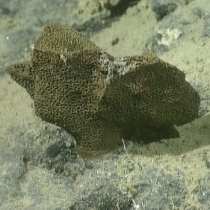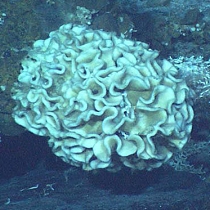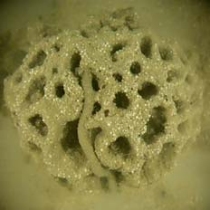Written by Jonathan Wojcik



I can't remember when it was that I first learned of these humble little creatures, but I've yet to fully overcome my amazement at their very existence, and by now, I'm sure you know that this is saying quite a bit. Leisurely creeping along the muck of the sea floor, these gelatinous globules collect tiny fragments of shells, sponges and other animal remains to build a hollow casing or "test" (what we see in these photos) around their delicate bodies. Different species favor different building materials, and many form tests of their own hardened excrement. They secrete a blanket of mucus as they sift for tiny particles of food in the surrounding mud, engulfing it in one more amorphous pseudopodia.
So, where's the shocking part? With some species reaching the size of a human fist, Xenophyophores are, by an immense margin, the world's largest single-celled organisms. They are protozoans, related to the amoeba.
They say you should always end things on a high note, and giant, pooping germs are
as high a note as any. For now, this concludes my dumb little e-tour of abyssal sea
life, though we've barely scratched the surface. Every year, science is surprised
anew by what we dredge up from these stygian pits, and we can no doubt look
forward to ever-weirder zoological discoveries in our lifetimes.

|

|

|
|
|
|
|